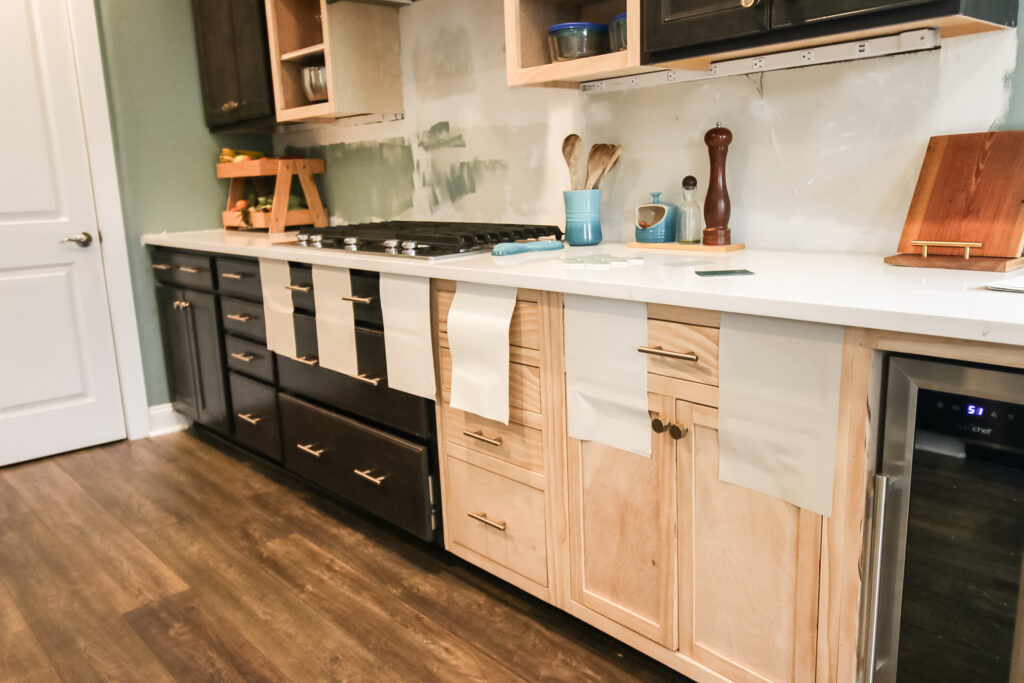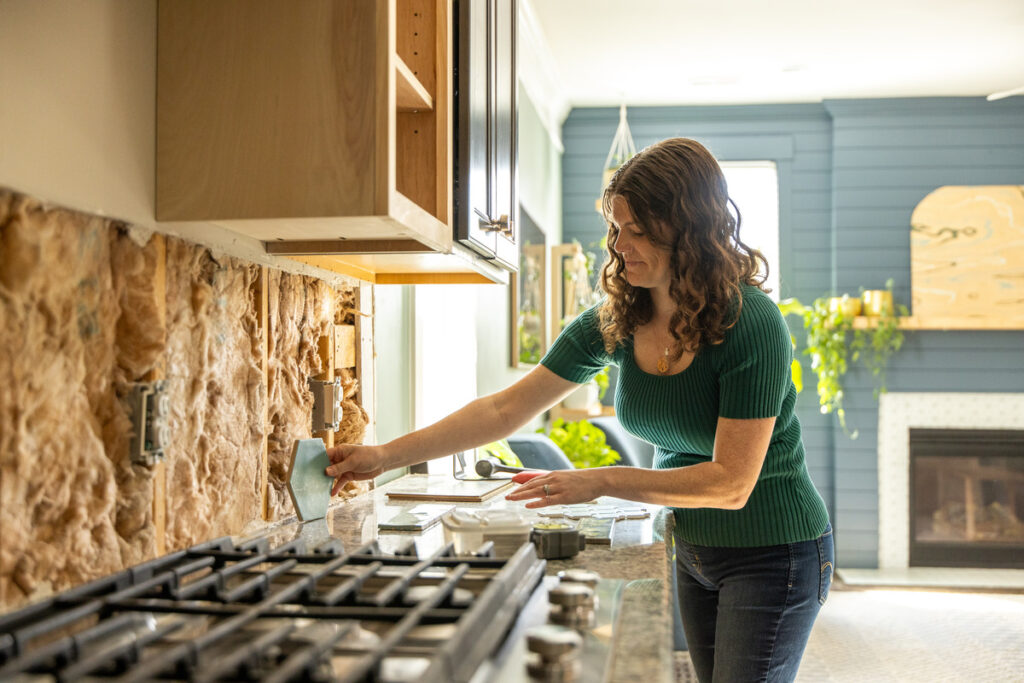Avoid common home renovation pitfalls with our expert tips! Learn the top mistakes people make when renovating their homes and how to prevent them, saving you time, money, and stress.
Renovating your home is a super overwhelming process. No matter how much you plan, things are always going to go off track!
The secret to keeping things going no matter what is proper planning. Taking the time to predict things that might go wrong and creating a contingency plan in case they do is the best way to stay in control of your renovation project.
Let's talk about the most common pitfalls for homeowners renovating their home so you can plan and save time, money, and stress.

Top Mistakes to Avoid When Renovating Your Home
Here are the most common home renovation mistakes and tips to handle them!
1. Lack of Planning
The biggest mistake you can make when renovating your home is failing to plan.
It's important to break your project down into sub-tasks and break each of those tasks into a to do list.
This is the best way to make a detailed timeline, budget, and supply list.
It's also a great way to identify areas that are most likely to have problems or delays and create contingency plans to address and deal with them if they arise.
Free printable project planner
Need help getting organized? Our free printable DIY project planner will help you get it all organized and planned on one page!
2. Underestimating Costs
People often underestimate the costs of materials, labor, and other expenses. This means that you can fall into a panic spiral trying to come up with more money or things to cut from the budget in the middle of the project.
The best way to create a good budget is to be very detailed and get actual quotes and prices for the actual items and supplies you plan to buy. Don't guess random numbers - do your research.
It's also good to add a contingency amount to each line item in case prices fluctuate. 10% is standard.
Identify items in your renovation that are "nice to have" and could be cut as needed, and prioritize - in advance - what you could cut or downgrade to save a little or a lot.
Finally, if you have the time, consider waiting for major sales. Holidays like black friday, memorial day, and 4th of july often have big sales on home renovation type items.
Buying things on discount means that you will either be able to do more in your renovation or do it all for less.

3. Choosing the Wrong Contractor
Even if you DIY, you will likely need to hire a contractor of some sort to help with your project. If you have a bad contractor, things can get delayed and expensive - and frustrating - quickly.
It's very important to vet your contractors and only work with licensed, reliable people.
Check references, look at their previous work, read their reviews, verify their licenses, and most importantly - ask around. You are most likely to get good recommendations from neighbors and people you know!
4. Ignoring Building Codes and Permits
Permits can be a bummer and can feel really dumb and unnecessary - but if you plan to ever resell your home, you want to be sure that everything is up to code.
Permitting is very local, so you will have to research your municipality and their requirements. But, take the hour to look it up just to cover yourself.

5. Overlooking Functionality
When you create a mood board for your room renovation, I bet you are focusing on aesthetics. And believe me, I get it.
It can be a lot more fun to pick out tile and paint colors and fabric swatches than worry about floorplans and functionality in a room.
But, it's important that you really start with a strong foundation of functional purpose of your space.
A poor layout or overlooking something like storage or room flow can make a renovation feel like a waste in the end.
Always start with functionality and finish with a fun aesthetics for best results.
6. Using Cheap Materials
There is a difference between getting a good deal and buying cheapo materials that are poorly made and low quality.
They can break, wear down easily, and be difficult to install properly.
The best way to avoid cheapo materials is to very carefully read reviews. Look for products with a lot of feedback and take that feedback seriously.
While you don't need to buy the most expensive option by any means, investing in high-quality materials for high traffic areas can definitely save you money in the long run.

7. DIY Without Proper Skills
We are all about DIY, but it's important to know your limits. There's certain times when you should DIY and certain times when you should higher it out.
Consider your skill level, the cost of tools you may need to purchase, and the risks of something going wrong when deciding if you can do it yourself.
Always watch a few YouTube videos and read some detailed tutorials to get comfortable with the process. If it is not a project you have tackle before.
If you're new to DIY entirely, definitely start with some smaller projects before taking on a huge or challenging task.
8. Not Planning for Future Needs
When you are designing a space in your home, you want it to be a great fit for how you use uour house right now.
But, you want to also consider your future new needs for the space.
This could involve considering your family growing, aging in place, or the adjusted needs of children as I get older.
Try to avoid design decisions that really pigeonhole your space and instead look for flexible options that can adapt as your needs changed as well.

9. Poor Timing
It's very important to plan your renovation's timing in a way that you can get it done in the least disruptive way.
January is a very popular time to start a renovation, after the mess of the holiday season has passed.
Think about your work or personal schedule as well. Do you have a busy season? Avoid it. Instead, wait for a time when you will have the least disruptions and be able to focus your energy on getting your project done.
10. Ignoring Energy Efficiency
When you are choosing new appliances and materials for your space, it's so important to keep energy efficiency in mind.
While they might be a little more expensive upfront, they usually can save you a lot of money in the long run.
Plus, energy efficient options can have tax benefits - which can help you to pay for the price difference.

Click here to grab our Home Renovation Planner and FINALLY get your next big DIY project organized!
Looking for something?
We've been doing this since 2012 so we have a LOT of blog posts!
Search stuff like: Ceiling Projects | DIY Plant Stands | Thrift Flips


Hello, I'm Morgan, half of the creative force behind CharlestonCrafted.com! With a passion for DIY that dates back to 2012, I've transformed three homes and now I'm dedicated to helping others craft their dream spaces. Let's turn your house into a home together!





